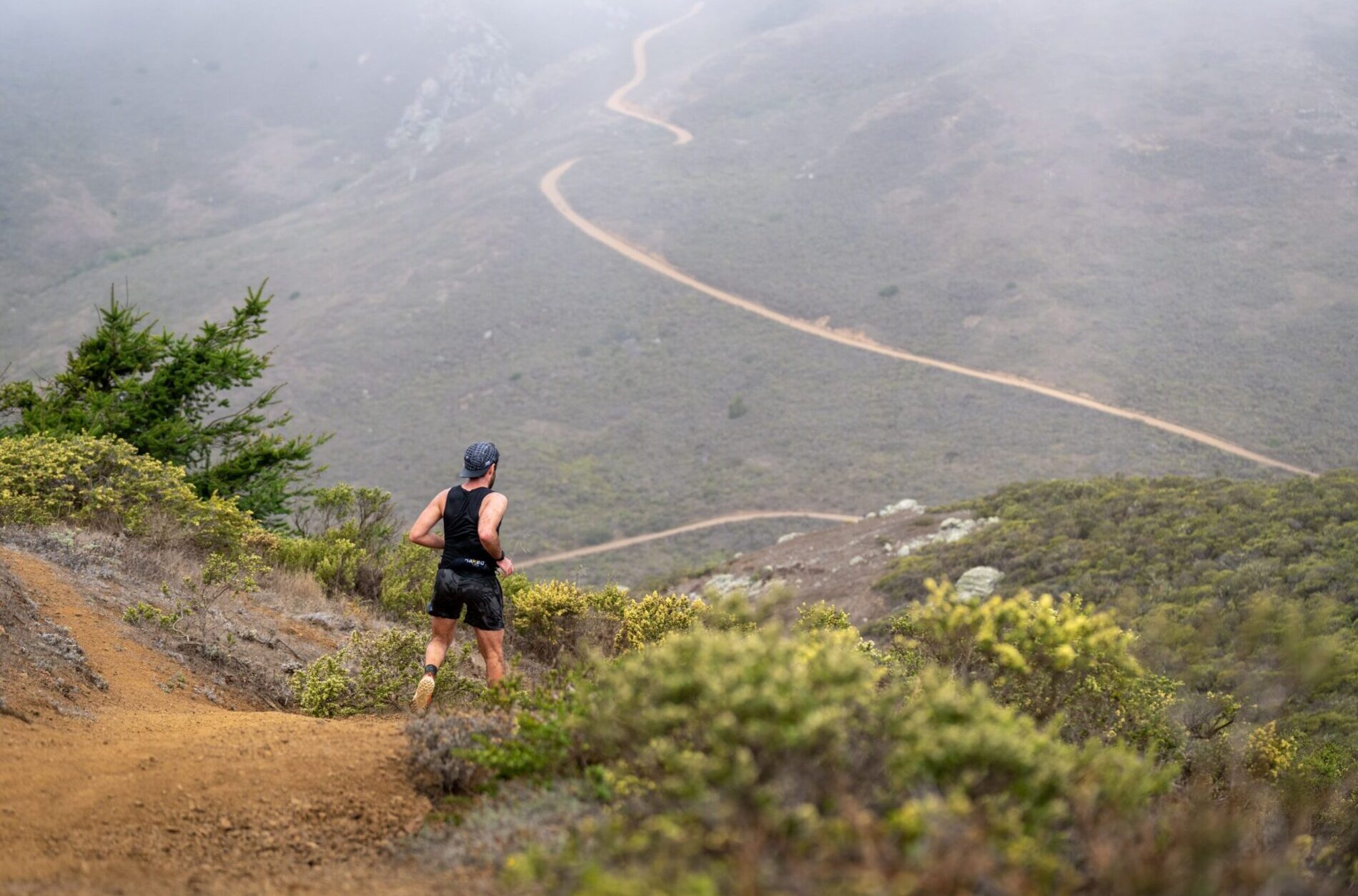
Intro
The range of different types of trail running shoes is vast, reflecting the sport’s diverse demands. While the designs of most road shoes take into account distance, speed, and anatomy, they all rely on the expectation of a consistent ground surface; trail running shoes contend with the added variable of unpredictable terrain. ‘Trail’ is a pretty loose term, getting a lot of its meaning from what it is not: paved. In this sense, both a groomed gravel path and a non-maintained stretch of technical singletrack can fall under the same definition, but differ wildly in how they’re best approached. So, to provide for this varied fourth dimension, trail shoe types are commonly broken up into even more specialized groups than their road counterparts — which adds a whole lot of complexity when you’re trying to figure out which shoes are going to be best for how and where you run.
In our third installment in our Trail Running Glossary of Terms series, we’ve provided brief summaries of popular trail running shoe categories, along with outlining some of their advantages and limitations. We’ve also included shoes from each classification to help illustrate their hallmark features. Learn more about each example, including where it falls within a brand’s entire lineup, by clicking on its name.
It’s important to note that many trail models straddle categories and have myriad uses, as well as different design features that make shoes within a general category differ significantly from each other. But this article should give you a broad idea of what to look for once you’ve settled on the type of shoe that best suits your needs.
We’ll be using a lot of common terms that define how shoes are made and classified, so for a general rundown on the construction elements of most trail running shoes, check out our Glossary of Terms for Shoe Anatomy.
(And if you’re having trouble deciphering a given brand’s shoe-tech jargon, be sure to check out our Running Shoe Brand Guides, where we go over every shoe in a brand’s lineup and discuss how each one differs.)
Maximal Trail Shoes
Shoes that fall into this category are defined by their high level of cushion and corresponding stack height — generally greater than 30 mm. They also tend to include a rockered sole geometry to promote better running economy / efficiency.
Runners looking to conquer long distances (marathon and up) on non-technical to moderately technical trails — typically at slower paces — will benefit from the added padding found in maximal shoes, though they’re suitable for any length run / hike. It’s widely thought that models with high amounts of cushion help mitigate leg fatigue and allegedly reduce injury rates by dampening impact forces, though to what degree is largely dependent on body type, training volume, and running mechanics.
Some drawbacks to these types of models include the added weight that comes with thick midsoles; potential foot instability from pairing a high stack with a narrow last; a lack of durability in models using large quantities of lightweight EVA, which can “pack out” and lose some of its energy return over time; and imprecision on technical terrain. Over the last 5 years, maximal trail running shoes have increased in popularity, with most brands now offering models belonging to this category.
Examples:
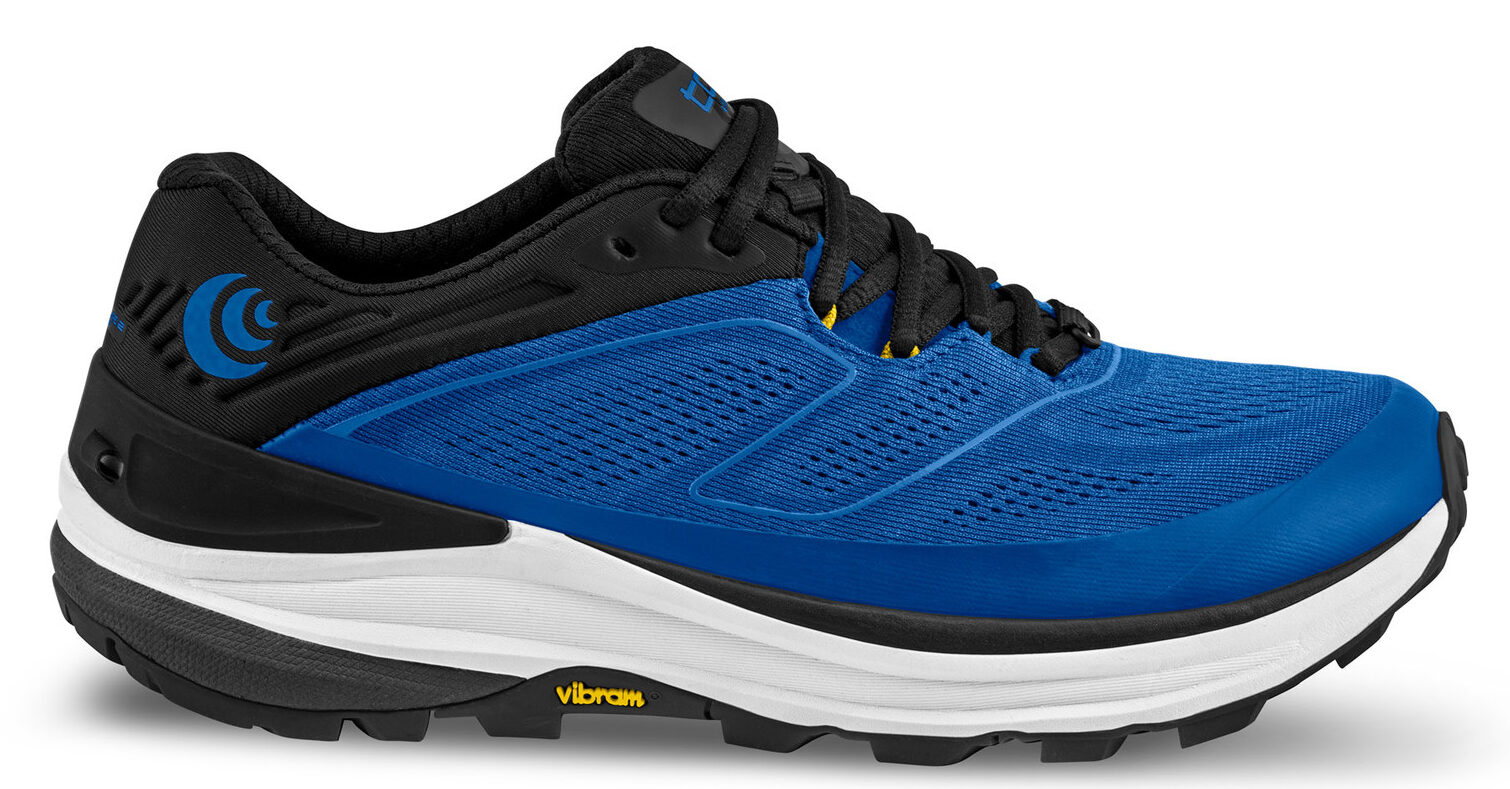
Stack Height
- Heel: 30 mm
- Toe: 25 mm
Drop: 5 mm
Stated Weight
- Men's: 295 g
- Women's: 235 g
MSRP: $135.00
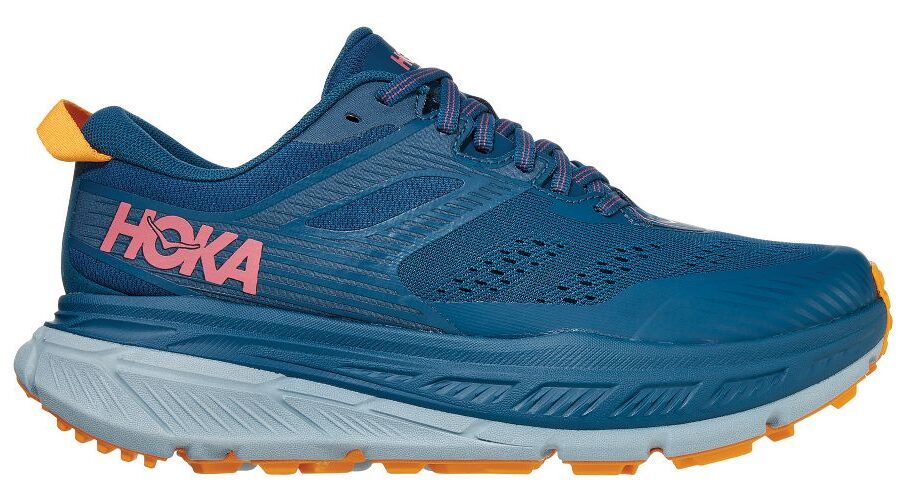
Stack Height
- Heel: 39 mm
- Toe: 34 mm
Drop: 5 mm
Stated Weight
- Men's: 332 g
- Women's: 278g
MSRP: $160.00
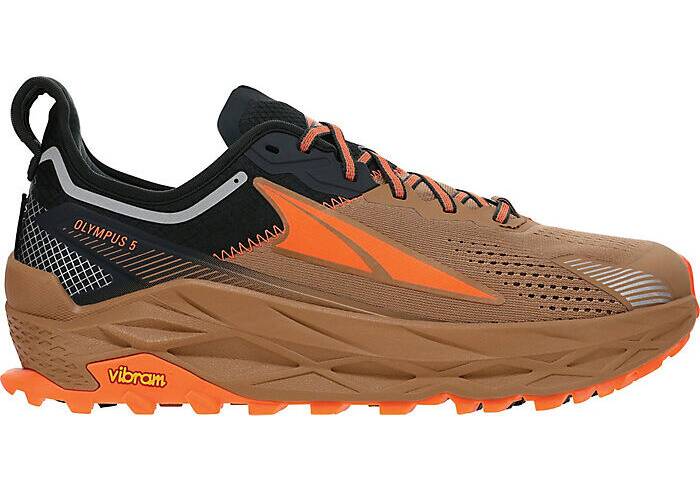
Stack Height
- Heel: 33 mm
- Toe: 33 mm
Drop: 0 mm
Stated Weight
- Men's: 350 g
- Women's: 295 g
MSRP: $180.00
Minimal Trail Shoes
In contrast to Maximal shoes, Minimal trail shoes are primarily designated by their low stack heights, which typically fall under 20 mm. Consequently, they tend to be quite a bit lighter than models closer to the ‘maximal’ side of the spectrum and have, on the whole, relatively lower heel-to-toe drops. Minimal trail shoes benefit runners who have more of a midfoot to forefoot foot strike, a way of landing that’s facilitated by the absence of a built-up heel counter commonly found in more cushioned models. Another advantage of having a shorter / thinner midsole includes improved ground feel and stability, which can make minimal trail shoes good options for more rugged genres of trail, though often at the expense of protection from rocks and the like. So, while shoes in this category can be used for any distance / terrain, they’re typically most at home on runs below the half-marathon mark and on moderately technical trails.
Some potential limitations to consider when thinking about minimal trail shoes include their limited range due to sparse cushioning, lack of underfoot protection (especially in models without a rock plate), and their tendency to offer less support than heavier shoes with more structure. It’s also thought that minimal trail shoes put runners more at risk for lower leg injuries, though again, to what degree is influenced by many factors. For that reason, folks transitioning from higher-cushioned models should do so slowly.
Examples:

Stack Height
- Heel: 21 mm
- Toe: 21 mm
Drop: 0 mm
Stated Weight
- Men's: 251 g
- Women's: 215 g
MSRP: $130.00
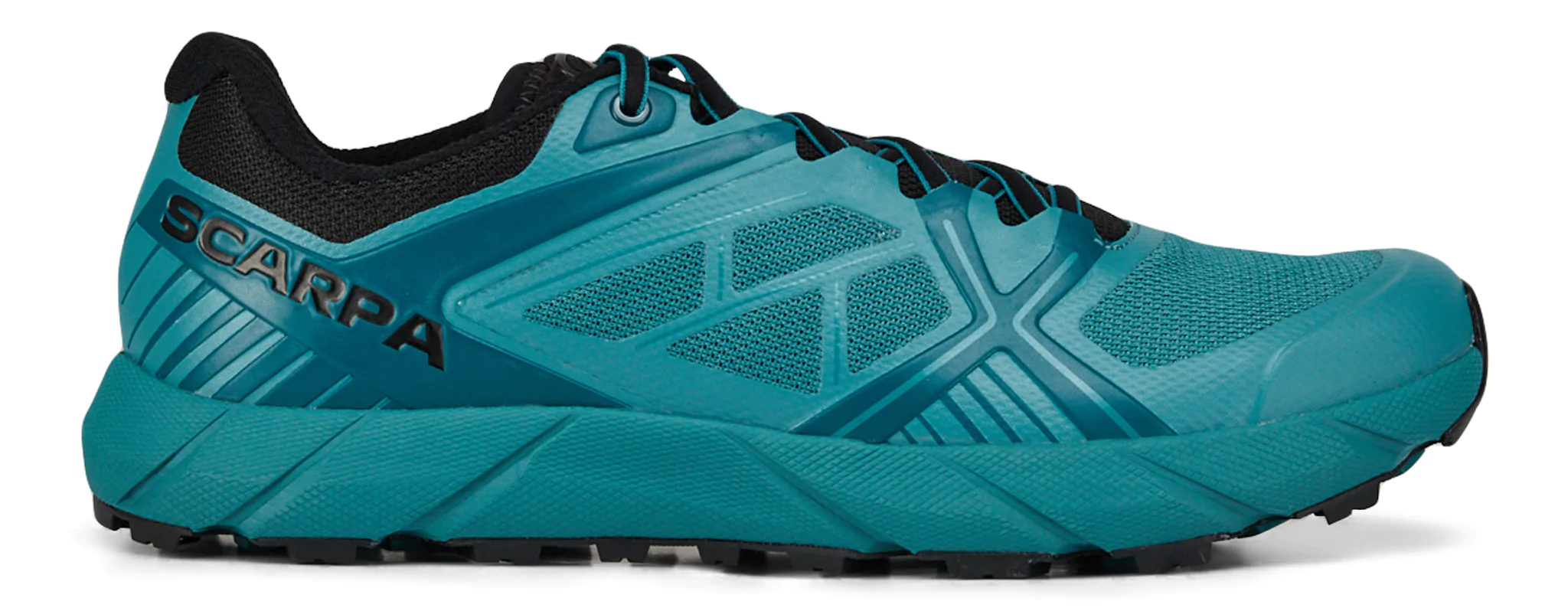
The Spin 2.0 is Scarpa’s most agile trail shoe. With its low stack height and Vibram Megagrip outsole, it should be more precise on technical terrain than the higher stack options in Scarpa’s line. If you’re on the hunt for a lightweight yet protective shoe for shorter efforts on rough trails, the Spin 2.0 could be worth checking out.
Stack Height
- Heel: 20 mm
- Toe: 16 mm
Drop: 4 mm
Stated Weight
- Men's: 252 g
- Women's: 213 g
MSRP: $179.00
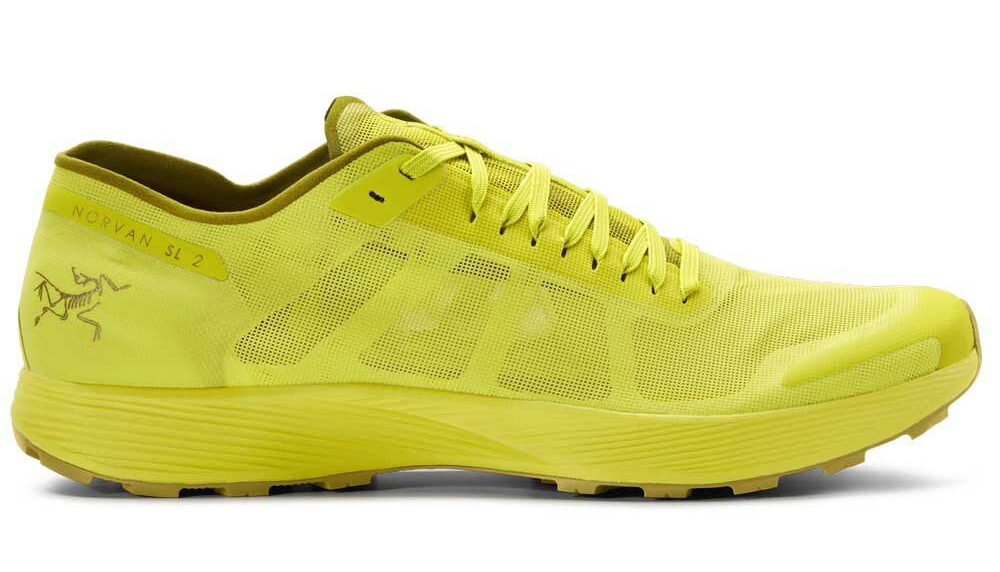
The Norvan SL 2 is an updated version of Arc’teryx’s answer to the demand for an ultra-light, stripped-down, trail running shoe. With a stated weight of just 170 g for a US Men’s size 9, the Norvan SL 2 might still be the lightest trail shoe on the market. It has a specially engineered ultralight EVA midsole that keeps it low to the ground and a Vibram Litebase outsole with fairly large, widely spaced 3.5 mm lugs. The Norvan SL 2 won’t be as protective or cushioned as beefier models in Arc-teryx’s line — and it also probably won’t hold up to day-to-day use nearly as well — but if minimizing weight is your top priority and you don’t expect to encounter much truly technical terrain, the Norvan SL should definitely be on your list.
Stack Height
- Heel: 19 mm
- Toe: 12 mm
Drop: 7 mm
Stated Weight
- Men's: 170 g
- Women's: 145 g
MSRP: $160.00
Road-to-Trail Shoes
Trail shoes in this category are designed to handle both paved and unpaved surfaces, whether that’s for commuting to a trailhead by road or for urban routes that hop back and forth between concrete and dirt. While road-to-trail models can technically fall anywhere on the scale between ‘maximal’ and ‘minimal,’ most trend in the direction of having high amounts of cushioning. A few other distinguishing features common to shoes of this style include higher heel-to-toe drops for stride efficiency and mild, non-aggressive outsoles that aim to provide traction on mellow trails without feeling inhibiting or clunky on roads. While competent on multiple surface types, road-to-trail shoes are not likely to excel on one in particular. However, because of their versatility, they’re often a great type of shoe for runners who only want to own one or two pairs, or for folks in need of a do-it-all travel shoe.
Examples:
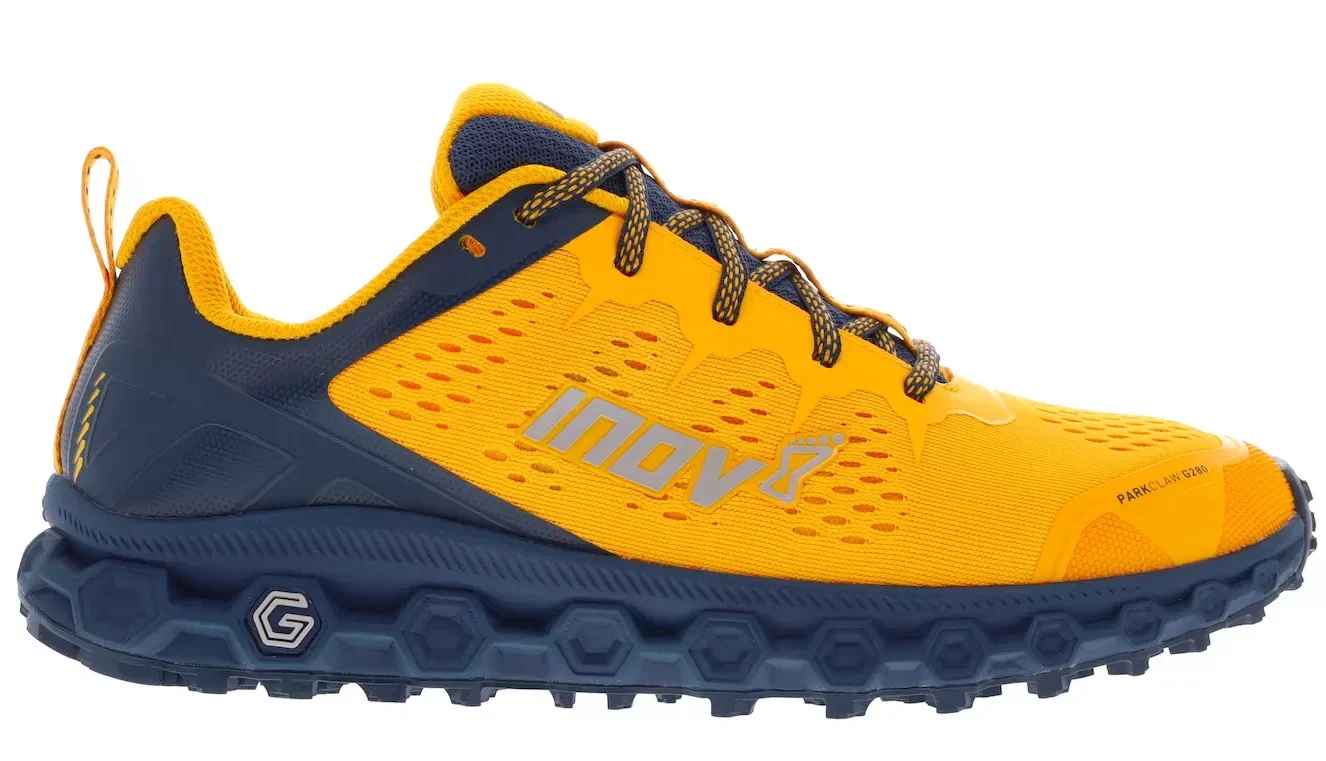
The Parkclaw G 280 is intended as a road-to-trail option for runners covering mixed terrain. The shoe pairs an engineered mesh upper and premium G-FLY foam midsole with an outsole made from super grippy Graphene for secure purchase on loose trails. The Parkclaw G 280 is a higher drop shoe from Inov-8 but makes sense for a model that will likely see plenty of road miles. While likely inadequate for burly terrain, the Parkclaw G 280 makes sense if your runs take you on a mixture of surfaces, or you’re just looking to restrict your shoe quiver to a pair or two. For a more comprehensive look, check out our full review of the shoe.
Stack Height
- Heel: 18 mm
- Toe: 10 mm
Drop: 8 mm
Stated Weight
- Men's: 280 g
- Women's: 280 g
MSRP: $180.00
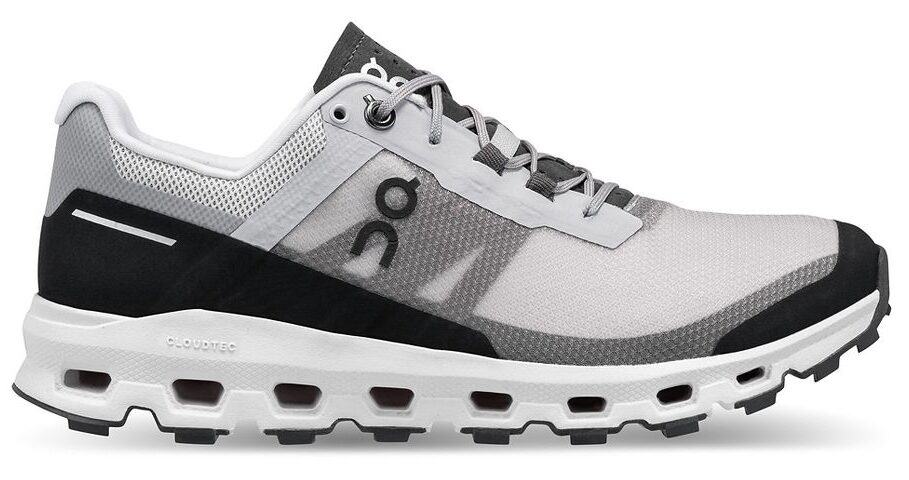
The Cloudvista is positioned as On’s road-to-trail shoe. Its midsole combines lightweight Helion Superfoam with On’s standard CloudTec pods, like many of On’s road shoes. However, the addition of a MissionGrip rubber outsole primes the Cloudvista for non-technical trails. The Cloudvista is definitely one of On’s more versatile offerings, capable of easily transitioning between pavement and hard packed dirt paths. The only thing slightly restricting about the Cloudvista is its range; the shoe performs best over short to medium distances. As such, it’s a good option for runners new to trails, or individuals looking for a single-quiver shoe. For a more comprehensive look, check out our full review of the shoe.
Stack Height
- Heel: N/A
- Toe: N/A
Drop: 7 mm
Stated Weight
- Men's: 280 g
- Women's: 235 g
MSRP: $139.99
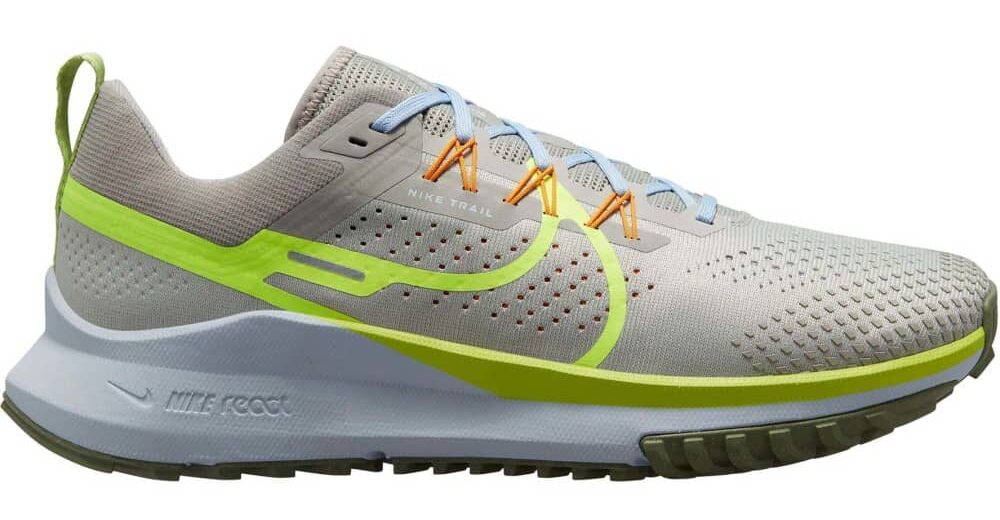
Stack Height
- Heel: 36 mm
- Toe: 26 mm
Drop: 10 mm
Stated Weight
- Men's: 295 g
- Women's: 244 g
MSRP: $140.00
Waterproof / Weather-Proof Trail Shoes
Many brands will take staple models in their lineups and slightly tweak their designs to make them more suitable for wet conditions. ‘Weatherizing’ can take many forms but generally consists of adding a waterproof / water-resistant lining to an existing model’s upper, extending the length of its outsole’s lugs, and/or occasionally restructuring the ankle collar to create more of a seal between the runner and the shoe.
On the whole, these additions make weather-proof shoes heavier, less breathable, and more expensive than their standard versions, but they will generally keep feet dry for longer in wet conditions, sometimes provide better traction on slippery surfaces, and are particularly useful in retaining heat when temperatures drop. However, once moisture enters shoes with waterproof membranes, be it externally from a river crossing or internally from perspiration, they typically drain poorly. It follows that weather-proof trail shoes might struggle in excessively warm conditions and/or on runs that require them to be fully submerged in water for long periods of time. E.g., if you’re going on a run that involves some shallow creek crossings or dewey trail-side vegetation but the weather is otherwise pretty warm and dry, you’d likely be better off with a breathable, quick-drying, non-waterproof shoe.
Examples:
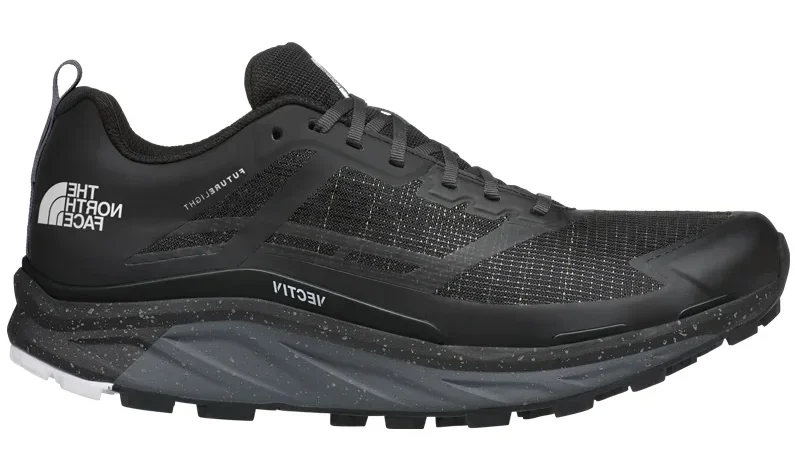
Stack Height
- Heel: 27 mm
- Toe: 21 mm
Drop: 6 mm
Stated Weight
- Men's: 335 g
- Women's: 291 g
MSRP: $195.00
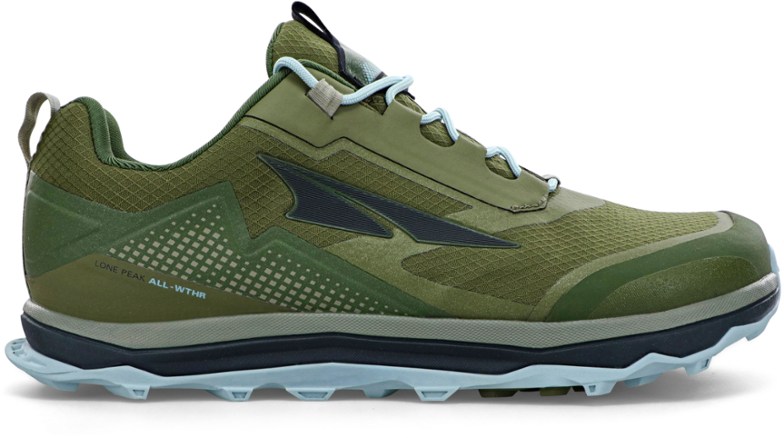
Stack Height
- Heel: 25 mm
- Toe: 25 mm
Drop: 0 mm
Stated Weight
- Men's: 374 g
- Women's: 295 g
MSRP: $170.00
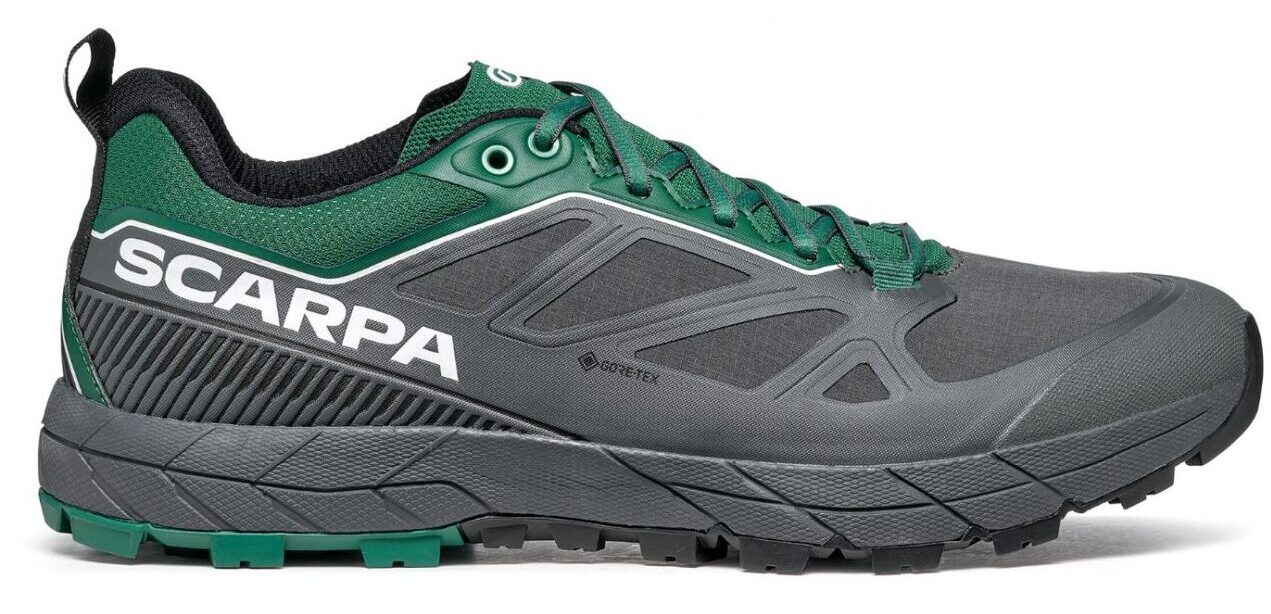
Stack Height
- Heel: 24.5 mm
- Toe: 18.5 mm
Drop: 6 mm
Stated Weight
- Men's: 320 g
- Women's: 270 g
MSRP: $189.00
Technical Trail Shoes
Think scree fields and high-alpine environments. Technical shoes prioritize protection and grip, packaging qualities from hiking boots and approach shoes into lighter running models. Rock plates, protective toe caps, grippy rubber compounds, and welded overlays are commonly used throughout technical trail shoes to shield against debris, provide better traction, and enhance durability. Models that belong to this category also tend to have precise, narrow fits to improve agility and foot placement accuracy. And while they can have stack heights ranging from what would be considered minimal to maximal, most technical trail shoes land somewhere in the middle when it comes to cushioning. Examples that do have stack heights exceeding 30 mm will still likely be pretty firm and inflexible.
As a niche category, technical trail shoes do have their fair share of limitations. Because they need to be more protective than other styles of shoes, they tend to be quite a bit heavier, making them less ideal for long-distance efforts that require large amounts of running (as opposed to scrambling / hiking). Even though technical trail shoes tend to be pretty hardwearing, the nature of the terrain they’re commonly used on (i.e., rugged trails) can make for short lifespans. That said, many trail runners find having a pair in their lineup worth the investment, especially if you’ve got access to the more demanding (but often highly rewarding) terrain in which they excel.
Examples:
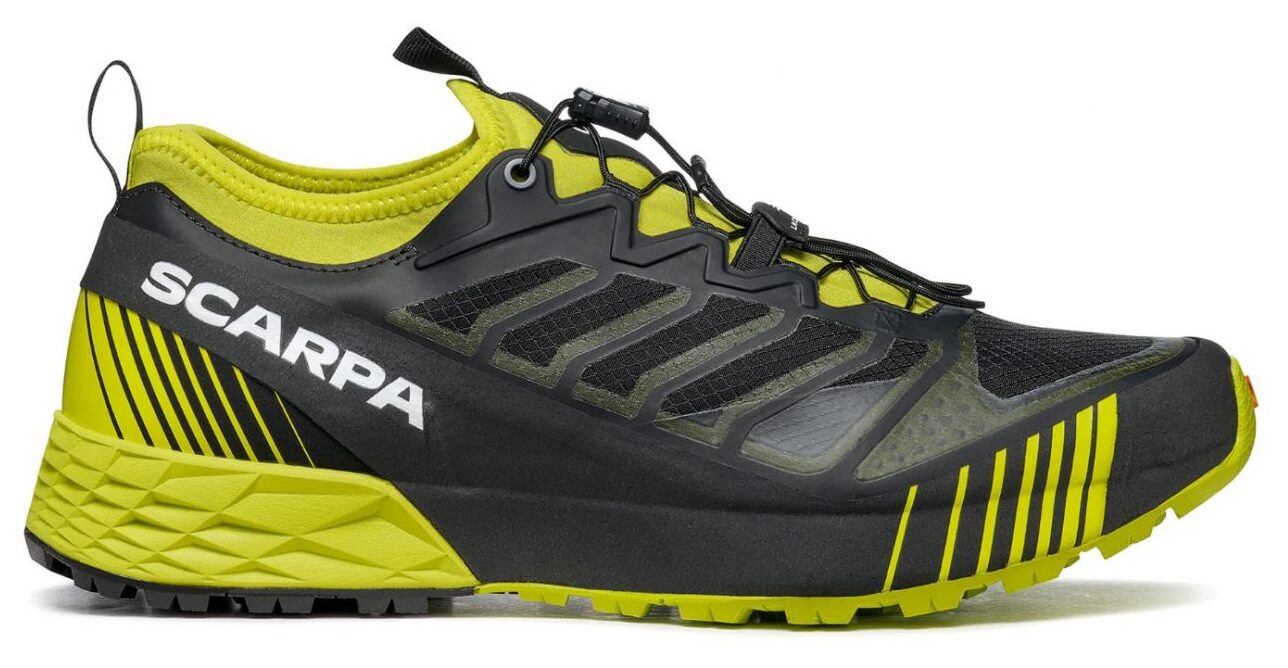
Stack Height
- Heel: 24.5 mm
- Toe: 20.5 mm
Drop: 4 mm
Stated Weight
- Men's: 300 g
- Women's: 260 g
MSRP: $139.00
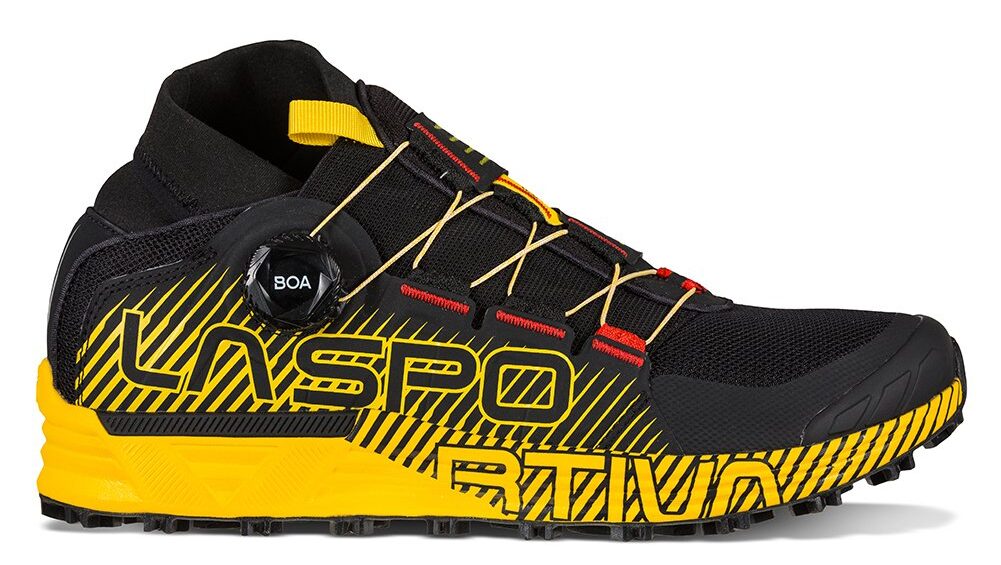
La Sportiva states right away that the Cyklon is intended for short and medium distance efforts on technical terrain, whether that be bushwhacking, sky running, or scrambling. This description is more specific than what we often see, and confirms that the Cyklon is not meant to be a utility shoe for all of your runs. Given its very grippy “FriXion White” outsole rubber, the high surface area of its lugs, numerous protective and stabilizing TPU overlays on the upper, and medial / lateral stabilizing inserts, this shoe belongs on rock, where a slower pace is unavoidable and maximum precision, grip, and feel are required. So if you’re looking for a super technical trail shoe for short-to-medium runs to and from those Flatiron-esque scrambling style missions, consider the Cyklon. For a more comprehensive look, check out our full review of the shoe.
Stack Height
- Heel: 28 mm
- Toe: 20 mm
Drop: 8 mm
Stated Weight
- Men's: 330 g
- Women's: 270 g
MSRP: $160.00
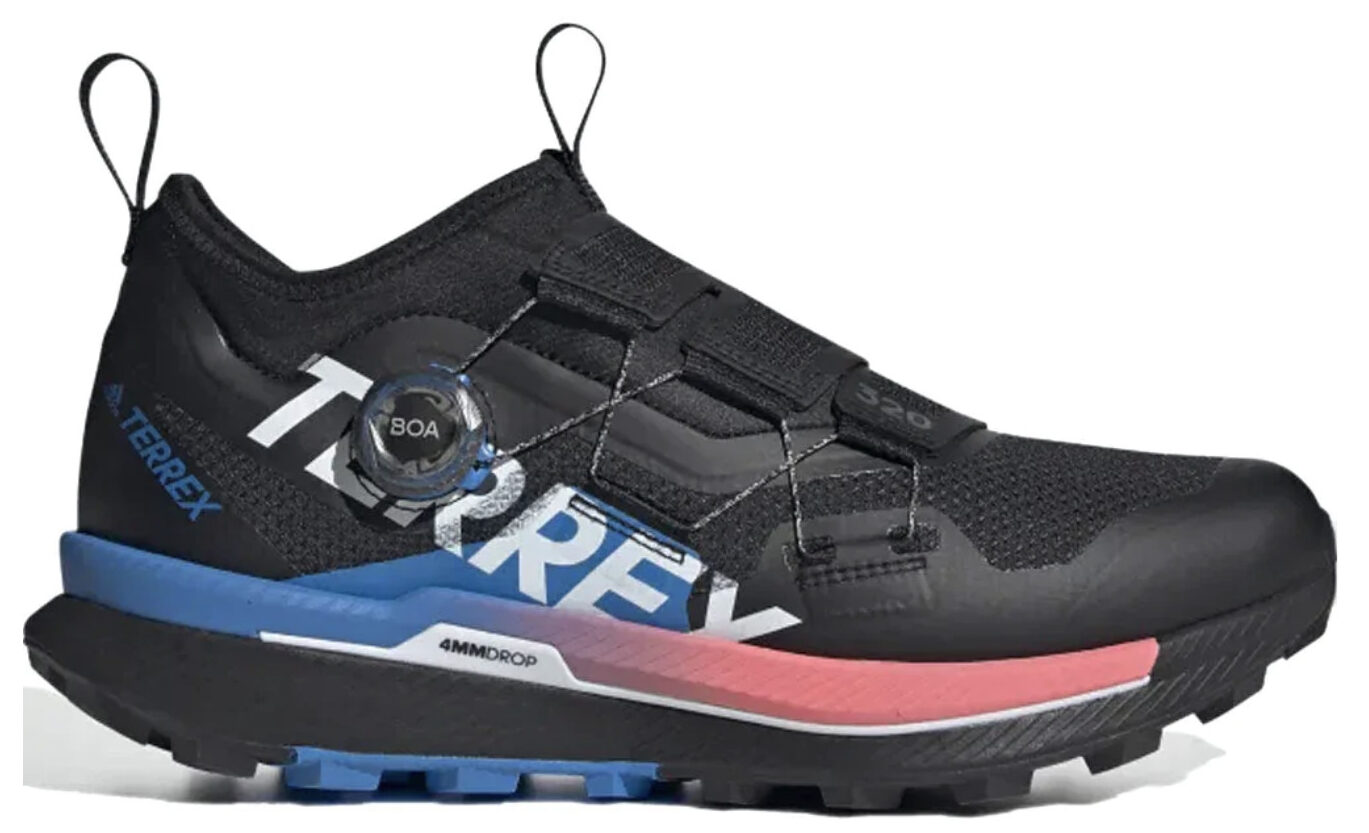
Stack Height
- Heel: 32 mm
- Toe: 28 mm
Drop: 4 mm
Stated Weight
- Men's: 317 g
- Women's: 278 g
MSRP: $220.00
Race-Specific Trail Shoes
As competitive trail running has edged closer and closer into the mainstream over the past dozen years, the race-specific category of trail shoes has increased not only its number of offerings but also its variety. In the past, models designed intentionally for timed performance were limited to minimal styles, best for shorter-distance mountain runs and not too far off from cross-country racing flats. That style persists, but the rise in popularity of ultra-distance events, which shared a timely overlap with a renaissance in road shoe innovations, has led to an influx of race-oriented trail running shoes for 50ks to 100-milers that incorporate similar technology. Examples from this category often feature performance plates made from either carbon fiber or Pebax for better energy return, minimal uppers, and other premium materials that cut down on weight without jeopardizing performance. Like technical trail shoes, most race-specific models also trend toward a narrow fit.
All of these upgrades do come at a cost, though. On average, race-specific trail shoes tend to be sometimes twice as expensive as other models within a brand’s lineup; and because they so heavily prioritize reducing weight for speed, their durability will also likely suffer. As a result, most runners will save these types of shoes for key workouts and races.
Examples:
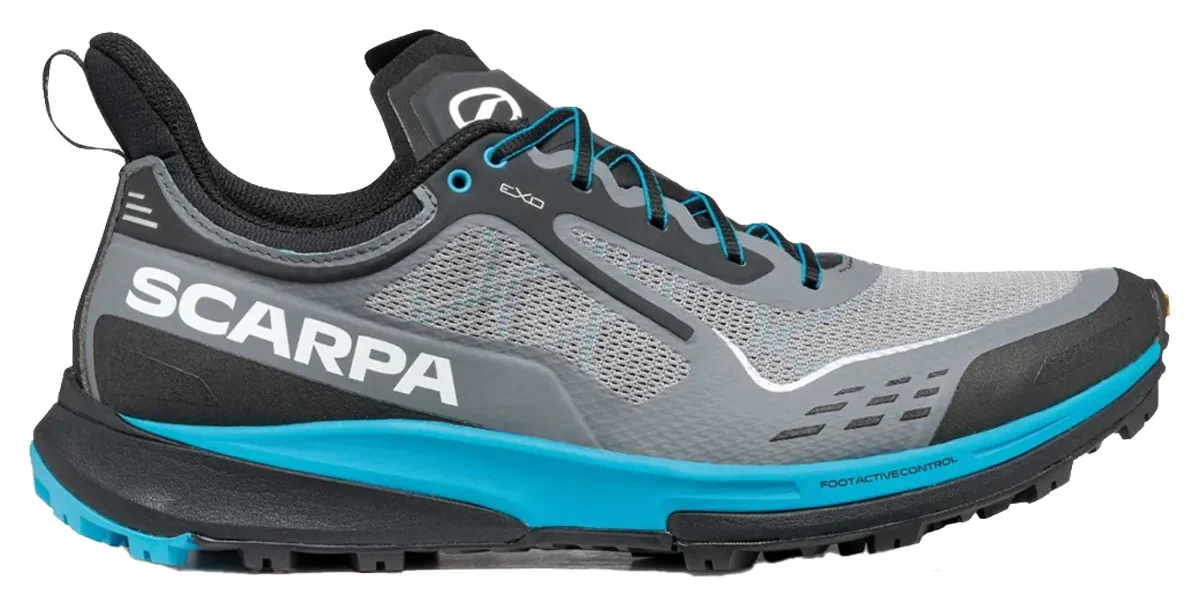
Stack Height
- Heel: 22 mm
- Toe: 16 mm
Drop: 6 mm
Stated Weight
- Men's: 265 g
- Women's: 230 g
MSRP: $199.00
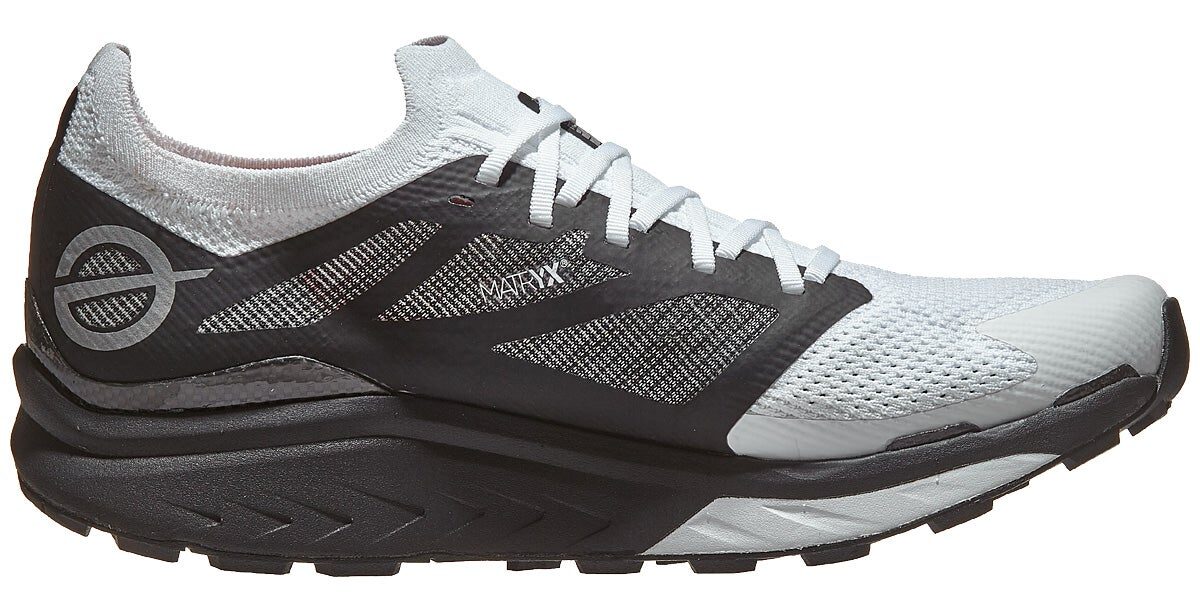
Stack Height
- Heel: 25 mm
- Toe: 19 mm
Drop: 6 mm
Stated Weight
- Men's: 285 g
- Women's: 245 g
MSRP: $199.99
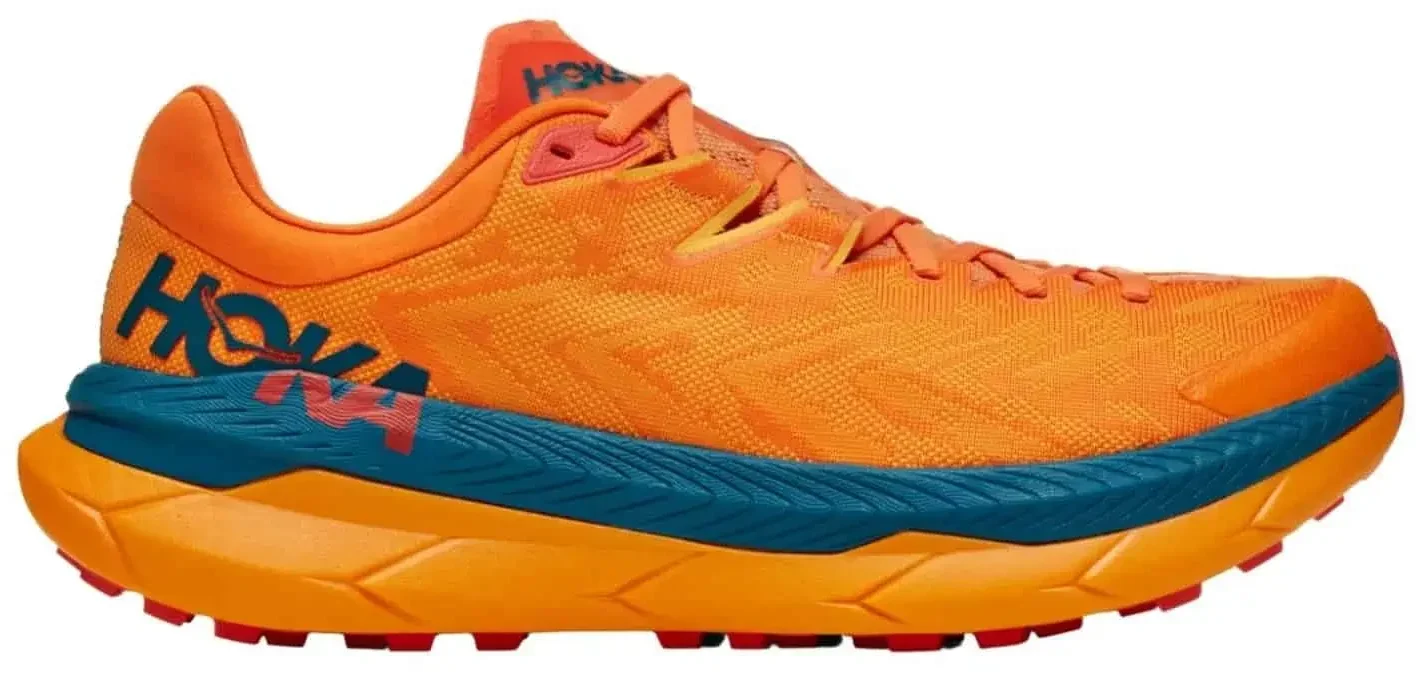
With the Tecton X, Hoka takes many of the signature characteristics common to race specific trail shoes and adapts them to fit a model intended for ultra-distance events. Much of this is accomplished by bumping the shoe’s stack height to 33 mm / 29 mm, much higher than most midsoles in its class. To counteract potential instability issues caused by doing so, Hoka incorporates two parallel carbon fiber plates into the Tecton X’s midsole to allow the shoe to flex on off-camber surfaces. A Vibram MegaGrip outsole with “Litebase” construction and a single-layer mesh upper allow the shoe to save weight while still offering maximal amounts of cushioning. If you want a relatively lightweight, efficient trail racer but in a highly cushioned shoe built for longer distances (half-marathon and up), check out the Tecton X. For a more comprehensive look, check out our full review of the shoe.
Stack Height
- Heel: 33 mm
- Toe: 29 mm
Drop: 4 mm
Stated Weight
- Men's: 252 g
- Women's: 196 g
MSRP: $200.00
Soft Ground Trail Shoes
Also commonly referred to as “mud shoes,” soft ground shoes are intended to be worn on loose, waterlogged surfaces. To contend with the boggy, sinking terrain common to areas like the U.S’s Pacific Northwest and the fells of the English Lake District, shoes of this variety almost always have outsoles with incredibly deep lugs, as long as 8 mm in some examples. They also tend to have minimal stack heights for stability purposes, sparse uppers designed to shed water / debris, and fairly narrow fits for better dexterity when conditions are slippery. This collection of features make soft ground trail shoes highly specialized, meaning that they likely won’t be great options for daily use, especially if your runs overlap with hard packed trails or roads. That said, you’d be hard pressed to find a better option for shorter runs and/or races in swampy environments, so if you often end up in those conditions, keeping a pair in your quiver could be a good idea.
Examples:
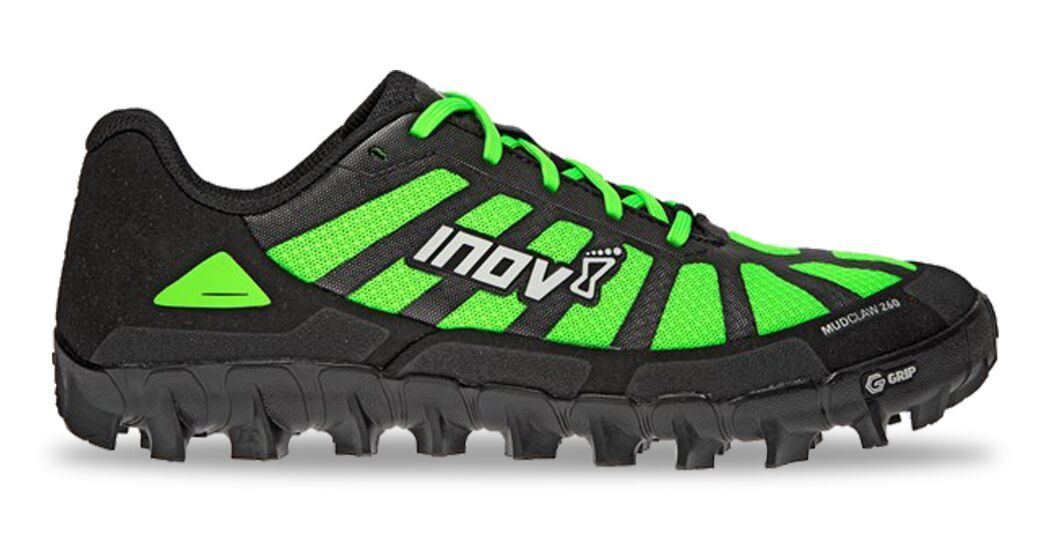
Stack Height
- Heel: 8.5 mm
- Toe: 4.5 mm
Drop: 4 mm
Stated Weight
- Men's: 260 g
- Women's: 260 g
MSRP: $185.00
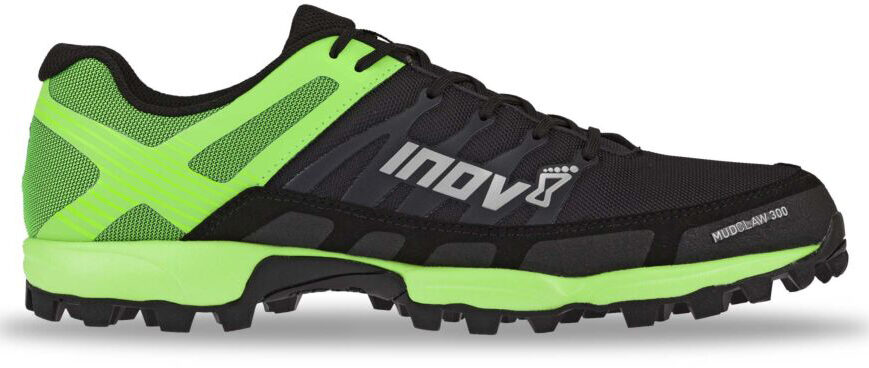
Stack Height
- Heel: 12 mm
- Toe: 6 mm
Drop: 6 mm
Stated Weight
- Men's: 300 g
- Women's: 300 g
MSRP: $155.00
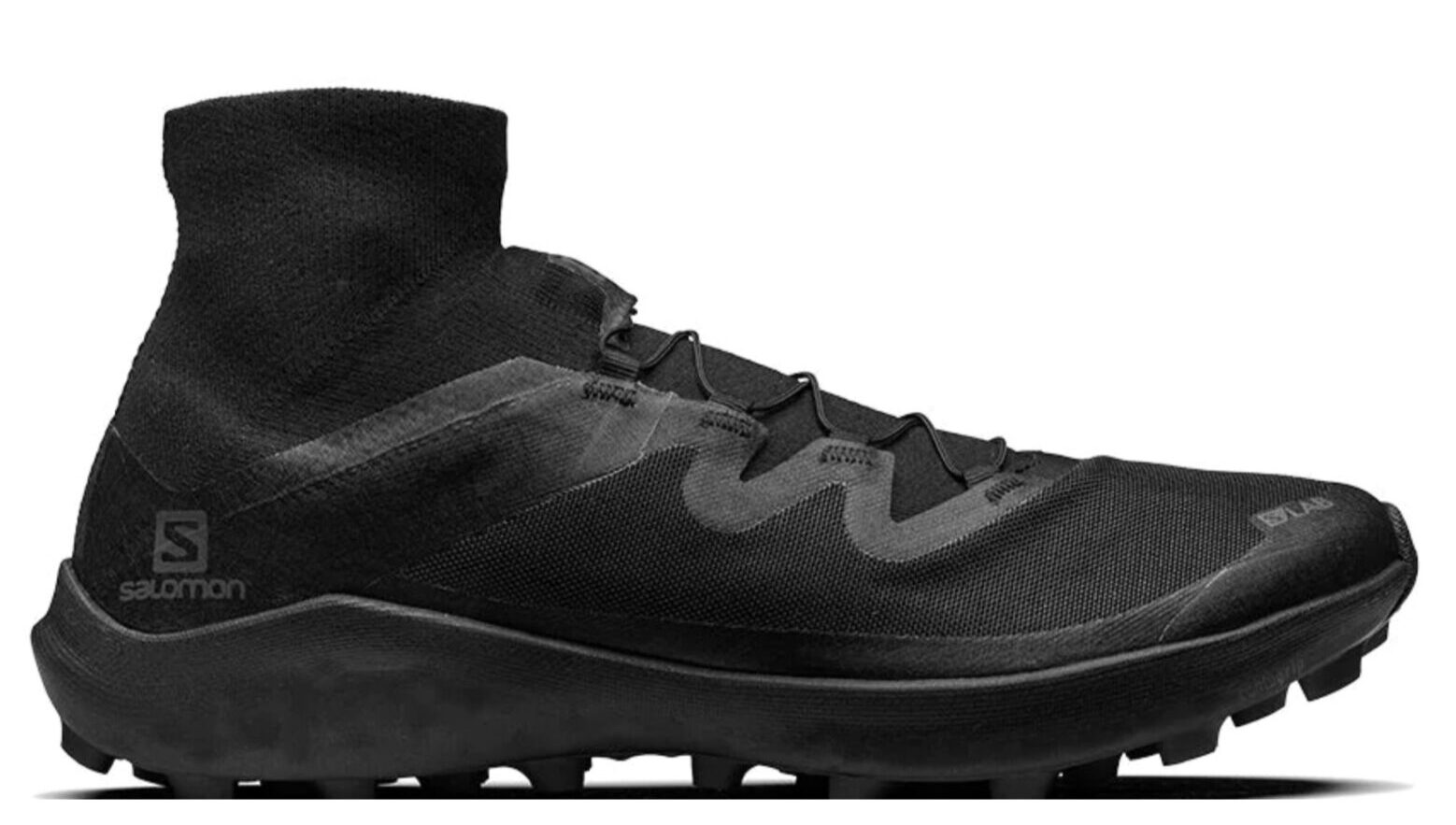
Stack Height
- Heel: 16.5 mm
- Toe: 12.5 mm
Drop: 4 mm
Stated Weight
- Men's: 230 g
- Women's: 230 g
MSRP: $200.00
Generalist Trail Shoe Category
While niche categories abound in the world of trail running shoes, not every model fits easily into just one classification; some hover between several. And in terms of how much space they take up in the market, more ‘generalist’ shoes are arguably the most common out there.
Many shoes resist specialization by incorporating features from different categories, in turn making them more versatile than models designed to excel in a particular context. So-called ‘generalist’ shoes usually temper extremes by featuring fairly average, more middle-of-the-road stack heights / weights, modest outsoles, and accommodating fits. They tend to be pretty capable across a wide range of surface types and distances, which makes them a great option for daily training and for runners who want to keep their shoe quiver to a reasonable size.
Due to their ambiguity, generalist shoes vary the most within their own broad category, so it’s arguably more important with this class than any to learn about what sets each shoe apart from another. This is where knowledge of common trail-shoe materials comes in handy, as well as articles like our Running Shoe Brand Guides and full reviews of individual shoes.
Examples:
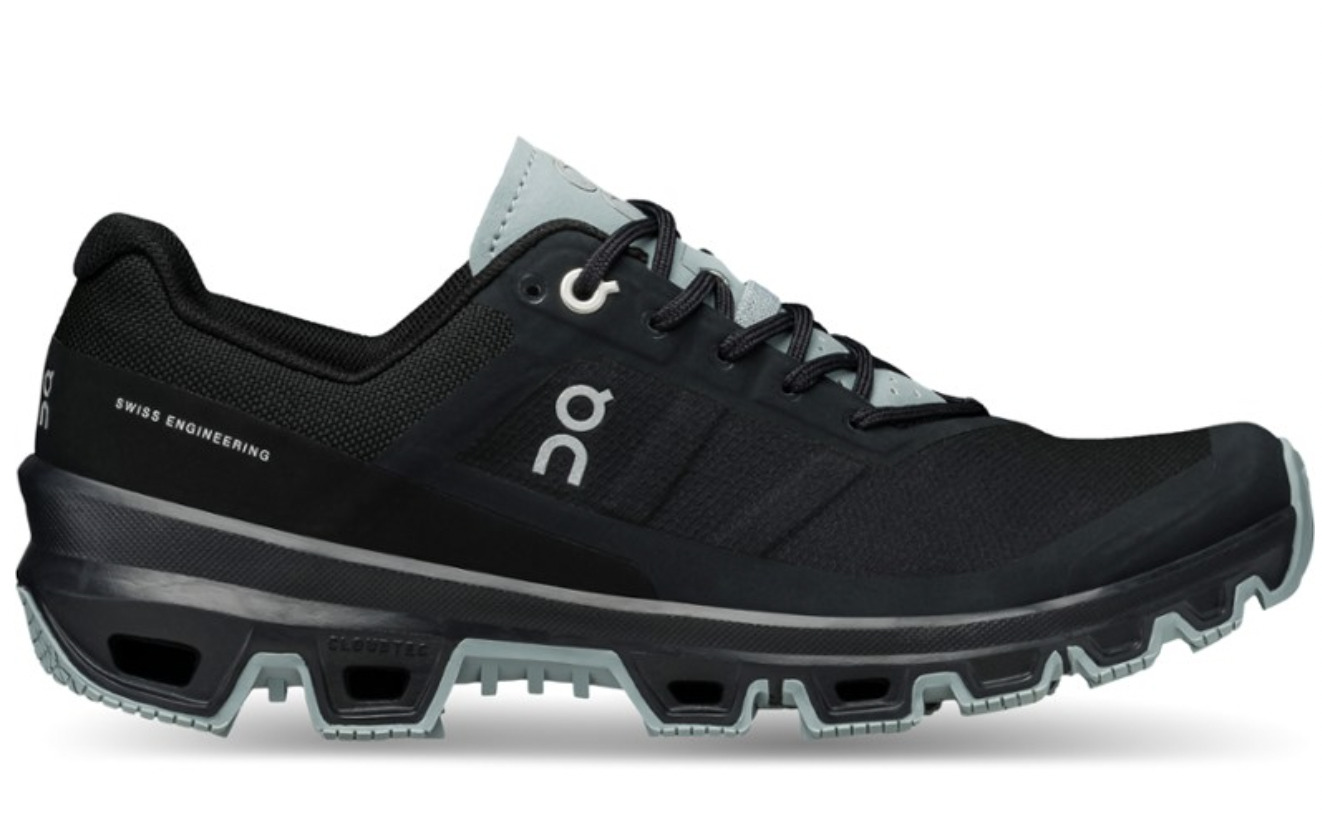
The Cloudventure is a moderately cushioned trail running shoe, designed to be a bit of a generalist — not specifically intended for any particular terrain, but supposedly capable on just about anything. The improved upper of the latest version is made from polyester and features flexible tongue wings for added support, and the shoe’s reconfigured midsole combines Helion superfoam with On’s new slingshot Speedboard for allegedly better energy return. The Cloudventure’s outsole is made from On’s Missiongrip rubber, now with a more aggressive tread pattern for added traction on a wide variety of terrain. If you’re looking for a daily training shoe that can handle a bit of everything, check out the Cloudventure. For a more comprehensive look, check out our full review of the shoe.
Stack Height
- Heel: 28 mm
- Toe: 22 mm
Drop: 6 mm
Stated Weight
- Men's: 310 g
- Women's: 250 g
MSRP: $149.99
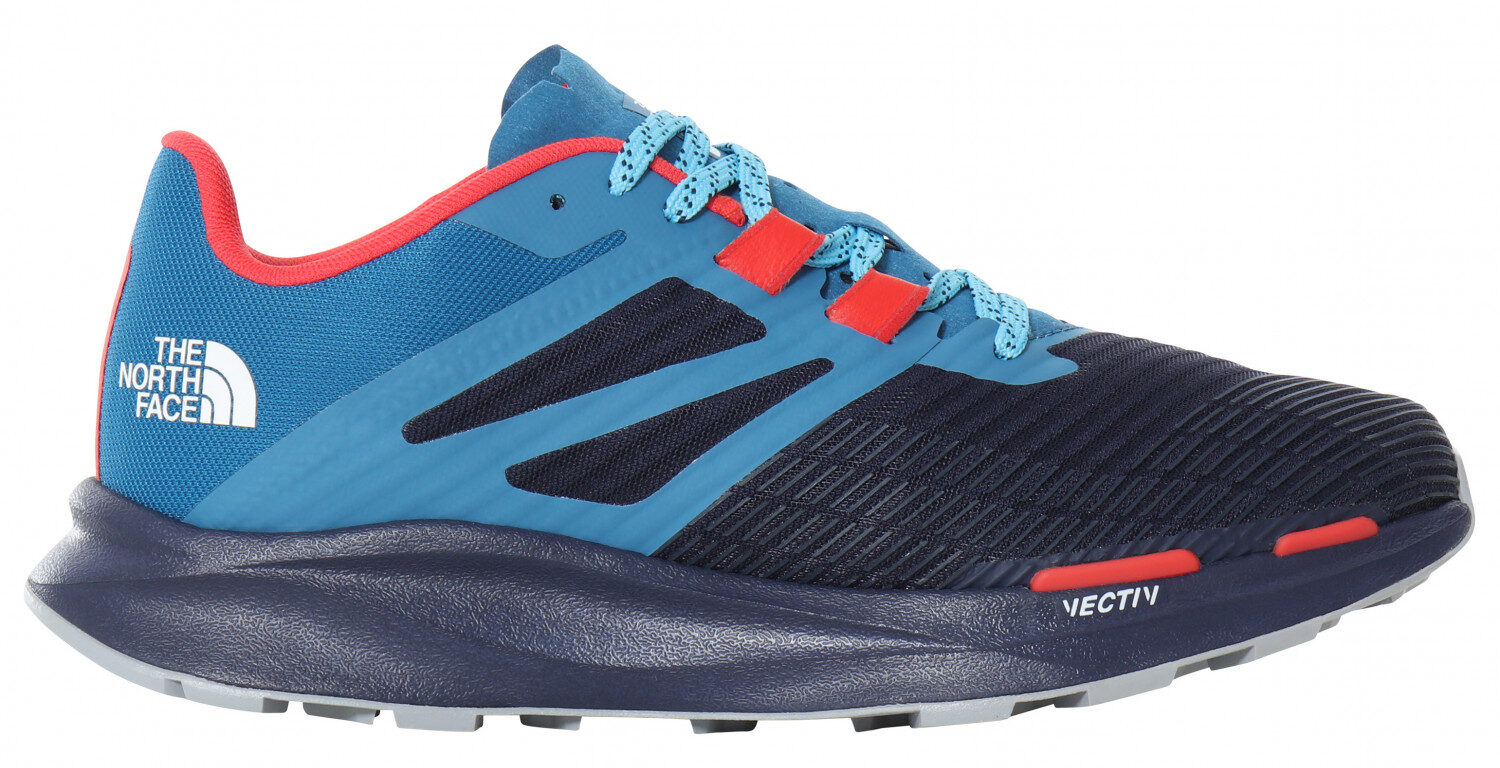
Stack Height
- Heel: 30 mm
- Toe: 24 mm
Drop: 6 mm
Stated Weight
- Men's: 297 g
- Women's: 255 g
MSRP: $129.00
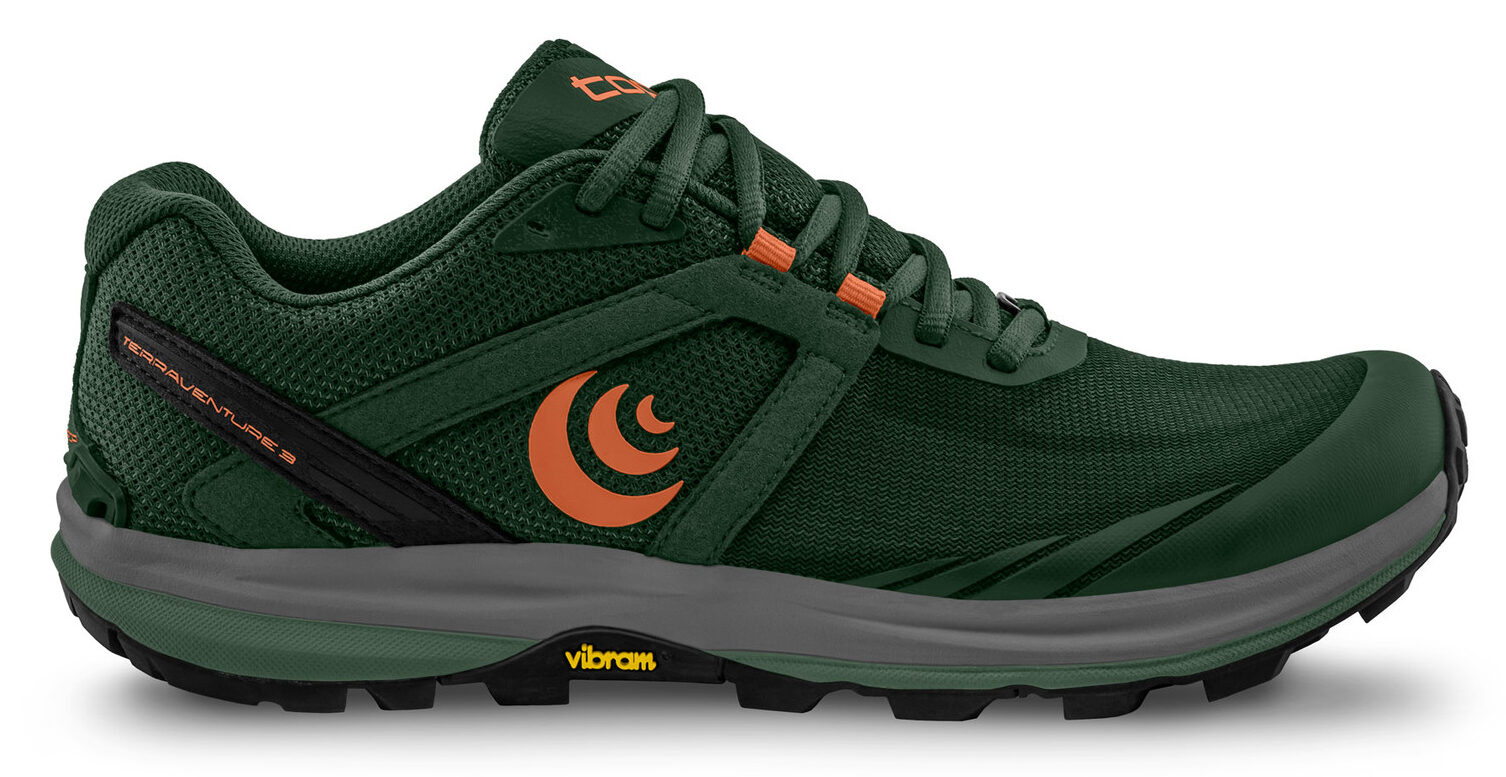
Stack Height
- Heel: 25 mm
- Toe: 22 mm
Drop: 3 mm
Stated Weight
- Men's: 289 g
- Women's: 230 g
